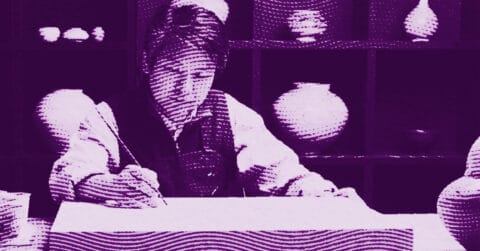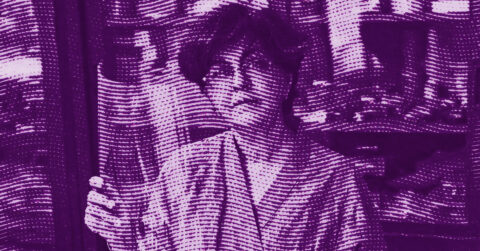Listen to me carefully, you bunch of snobs! Miquel Barceló is not just a painter, but an archaeologist of the present who digs into the layers of our collective visual heritage. This child of Felanitx, born in 1957 in this small town in Majorca with millennial traditions, has created an artistic universe that escapes easy categories and pre-established formulas that art dealers and exhibition curators lacking inspiration love so much.
I arrived in front of his works with that mixture of curiosity and impatience that always drives me in my artistic peregrinations. And there, what a slap! His canvases jump on you like a hungry predator. This excessive materiality, these juicy layers, these deliberate cracks and these worked surfaces like plowed fields after a storm! We are far from the neat nonsense that is served to us in international fairs.
Barceló practices a form of fierce syncretism, at the crossroads of what I would call a visual anthropology and a visceral expressionism. His gigantic works at the cathedral of Palma de Majorca (2001-2007) constitute a manifesto of this approach: the artist reinvents the sacred through a contemporary language that dialogues with the secular architecture. The 300 square meter ceramic wall representing the multiplication of the loaves and fishes becomes a visual feast where the clay speaks, breathes and tells the human condition.
What strikes me in Barceló’s work is his intimate relationship with existentialist philosophy. This is the first axis I would like to explore with you. The entire work of this Majorcan could be read as a Sartrian meditation on commitment and authenticity. When Jean-Paul Sartre wrote that “existence precedes essence”, he was unwittingly defining Barceló’s method. The latter does not seek to illustrate pre-established concepts, but lets the work emerge from his confrontation with matter. “I have never painted an idea in my life”, he once confided, “I paint situations” [1]. This phenomenological approach to creation directly joins existentialist preoccupations: being-in-the-world precedes any intellectual abstraction.
Take his series of “Libraries” (1984): these interiors filled with books, where the artist often appears as a ghostly presence, constitute less a celebration of erudition than a questioning of our relationship to knowledge and transmission. As Sartre wrote in “The Words”, “culture saves nothing nor anyone, it does not justify. But it is a product of man: he projects himself into it, recognizes himself in it” [2]. Barceló materializes this ambivalence in paintings where books seem both refuges and prisons, sources of light and crushing masses.
His painting “Mad Love” (1984) pushes this existentialist reflection even further. The artist represents himself naked, in erection, surrounded by his fetish authors, Nabokov, Joyce, Baudelaire. This audacious work frankly questions the way in which our identity is constructed through our cultural references, while crudely reminding us of our carnal condition. Existentialism teaches us that we are simultaneously consciousness and body, transcendence and facticity. Barceló translates this duality into images, without compromise or excessive modesty.
The second theme that runs through Barceló’s work like a bloody red thread is his relationship with anthropology. Far from being a simple cultural tourist, the Majorcan artist lived for years in Mali, immersed in Dogon culture. This was not a facade exoticism, but an authentic search for the origins of human creativity. He established striking parallels between Western contemporary art and so-called “primitive” artistic expressions, revealing their common roots.
Claude Lévi-Strauss, in “The Savage Mind”, argued that “the bricoleur is able to execute a great number of diversified tasks; but, unlike the engineer, he does not subordinate each of them to the obtaining of raw materials and tools, conceived and provided for according to his project” [3]. This definition of the bricoleur as a figure of the artist applies perfectly to Barceló. In his successive workshops, in Majorca, Paris or Sangha, he accumulates disparate materials (natural pigments, sand, volcanic ash, algae) that he transforms according to the needs of the moment.
His African notebooks, made between 1988 and 2000, testify to this anthropological approach. Barceló meticulously documents the daily life of the Dogons, but without ever falling into the trap of easy exoticism. He seeks rather to capture what Mary Douglas called the “structures of meaning” that operate in all cultures [4]. The rituals of daily life, fishing, cooking, building, become under his hand acts charged with a symbolic power that transcends their primary function.
“Gran animal europeu” (1991) exemplifies this fusion between anthropology and artistic practice. This immense canvas representing a crucified animal functions as a contemporary ritual artifact. Barceló transcends simple representation to reach the domain of the sacred, not in a conventional religious sense, but in the acceptance given by the British anthropologist Victor Turner: a liminal space where the usual categories are temporarily suspended [5].
What pleases me about Barceló is his ability to remain a wild animal in the sanitized jungle of contemporary art. At a time when so many artists seem to produce works to satisfy algorithms and investors, he continues to get his hands dirty. His monumental ceramic for the Palace of Nations in Geneva (2008), this polychrome dome that hangs like an inverted cave, is a masterful snub to the functionalist architecture that surrounds it.
The best works of Barceló possess this paradoxical quality of being both ancient and new, as if they emerged directly from prehistoric caves but spoke our contemporary language. His fascination for the cave paintings of Chauvet or Altamira is not nostalgia or regression, but recognition of a fundamental continuity in the human artistic experience. In 2016, when he declared that “the artists of Chauvet are my contemporaries” [6], he did not make art history a dusty museum, but a living space where temporalities telescope.
Barceló’s ambivalence towards bullfighting illustrates his complex position as a contemporary artist rooted in ancestral traditions. In the 1990s, he produced a striking series of works on this theme, not out of morbid fascination with violence, but to explore what the anthropologist Clifford Geertz called a “deep play”, a ritual where a society stages its fundamental contradictions [7]. Then, in 2015, he acknowledges that “bullfighting is on the decline”, testifying to an acute awareness of the ongoing cultural mutations.
This tension between tradition and contemporaneity also animates his still lifes. When Barceló paints fruits, skulls or fish, he knowingly dialogues with the entire history of Western painting, from Zurbarán to Soutine. But he reinvents them through such an intense material treatment that these familiar objects become strange, disturbing, almost monstrous. As the anthropologist David Freedberg writes in “The Power of Images”, “we tend to suppress our bodily reaction to images” [8]. Barceló, on the other hand, reactivates this physical dimension of our relationship to representations.
The sea, omnipresent in his recent work, is not just a visual motif, but a philosophical and anthropological principle. For this seasoned diver, immersion in the marine depths is analogous to the act of painting, an exercise in patience and attention, a suspension of ordinary time. “Painting is like freediving”, he confides, “you wait for the moment to act” [9]. This aquatic metaphor brings us back to the phenomenology of Gaston Bachelard who, in “Water and Dreams”, analyzed how this primordial element structures our imagination.
Today, as so many artists cautiously navigate the tepid waters of contemporary political correctness, Barceló continues to dive into the tumultuous depths of our collective experience. His exhibition “Organizational Solitude” at the Caixa Forum in Madrid in 2010 presented a self-portrait in the form of a meditative gorilla, a provocative image that reminds us that, beneath the veneer of our cultural sophistication, we remain primates confronted with the same fundamental questions as our ancestors.
I cannot help but think that if existentialism and anthropology resonate so strongly in Barceló’s work, it is because these two disciplines question what it means to be human in a disenchanted world. The Majorcan artist refuses the easy way of ready-made answers. Like the anthropologist Claude Lévi-Strauss who sought to understand “how myths think themselves in men and unbeknownst to them” [10], Barceló explores how images inhabit and surpass us.
Barceló’s art, nomadic, protean, visceral, scoffs at labels. Neo-expressionist? Post-modern? These classifications that make the happiness of exhibition catalogs and university theses collapse in the face of the raw power of his creations. He belongs to that rare category of artists who transform not only our way of seeing, but also our way of being in the world.
As we are flooded with disembodied digital images, Barceló reminds us of the irreducible materiality of the artistic experience. His works do not demand to be “understood” intellectually, but experienced physically, as we feel the caress of the wind or the bite of the cold. They invite us to reconnect with this sensual and existential dimension of art that our hyper-connected era tends to neglect.
In the end, what Barceló tells us through his exuberant work is that art is not a luxury or entertainment, but an anthropological necessity as fundamental as eating, sleeping or making love. “I make art because I need to”, he states bluntly [11]. This disarming simplicity in the affirmation of his vocation contrasts with the cynicism and postures that too often plague the contemporary art scene.
In a world where market value constantly threatens to eclipse aesthetic value, where works become financial assets before being sensitive experiences, Barceló’s obstinate journey reminds us that authentic art always arises from an inner necessity and not from market fluctuations. His singular trajectory, from Majorca to Paris via Africa, draws a personal geography that escapes the well-marked circuits of globalized art.
So yes, you bunch of snobs, Miquel Barceló is much more than a successful Spanish painter. He is an explorer of the limits of our humanity, an archaeologist of the present who relentlessly digs through the layers of our collective experience to extract images that are as ancient as they are new, as universal as they are deeply personal. His works remind us why we need art: not to decorate our walls or diversify our investments, but to help us inhabit this world poetically.
- Interview with Miquel Barceló, Cahiers d’Art, Paris, 2014.
- Sartre, Jean-Paul, Les Mots, Gallimard, Paris, 1964.
- Lévi-Strauss, Claude, La Pensée sauvage, Plon, Paris, 1962.
- Douglas, Mary, De la souillure: Essai sur les notions de pollution et de tabou, La Découverte, Paris, 1992.
- Turner, Victor, Le Phénomène rituel: Structure et contre-structure, PUF, Paris, 1990.
- Barceló, Miquel, Speech at the exhibition “Sol y Sombra”, Musée Picasso, Paris, 2016.
- Geertz, Clifford, “Deep Play: Notes on the Balinese Cockfight” in The Interpretation of Cultures, Basic Books, New York, 1973.
- Freedberg, David, Le Pouvoir des images, Gérard Monfort, Paris, 1998.
- Barceló, Miquel, interview with Jurriaan Benschop, Brooklyn Rail, June 2024.
- Lévi-Strauss, Claude, Le Cru et le cuit, Plon, Paris, 1964.
- Miquel Barceló, interview in El País, Madrid, 2005.
















